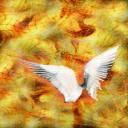Yahoo Answers is shutting down on May 4th, 2021 (Eastern Time) and the Yahoo Answers website is now in read-only mode. There will be no changes to other Yahoo properties or services, or your Yahoo account. You can find more information about the Yahoo Answers shutdown and how to download your data on this help page.
Trending News
I am ready to upgrade. May I get some input about my selection?
Cannon EOS Rebel Xsi. 12.2 megapixel.
This model seems to have the performance and features I need, and fits in my price range. Namely, it has fully manual options, interchangeable lenses, shoots in RAW format and is, of course, a DSLR.
I'd like to hear from other users, especially. What I'm not getting from the published user reviews are notes about shutter lag, battery life, Does it have plugs for a remote flash and a reciever for a shutter cable, and if the lenses can recieve various filters, such as a polarizing one.
Any other advice, pro and con would be appreciated, as well as suggestions for alternate products. My applications are VERY general, and include some limited studio shooting, a LOT of outdoor work, including motor vehicles, watercraft and aircraft, nature photog, including as much wildlife as I can get access to, land and seascapes. Not so much for action photos, except wildlife. Some of this is as an adjunct to my graphic design work, but most commercial grade photography is farmed out to professionals. Some published work, but very little that requires more than eight megs or so in final form. What I want is to upgrade enough to retain more of what I have to farm out and keep it in house, and, to avoid the expense of a camera body upgrade for several years. I don't mind upgrading lenses, but not the camera itself.
Thank you, friends.
Vince M.
Thanks, Petra & Amy for your quick and informative responses. I did notice, from some spec sheets that "RAW+JPEG" format and wondered what THAT meant. The kit I have been looking at DOES include the 18 to 55 mm lens, and, until I save up a bit more, it is what I'll be working with. I found a spec sheet that mentioned filter attachments, so, that's good and a UV filter is a good investment. When I shot film, many years ago, one of these was ALWAYS mounted unless I needed another kind, like a polarizing filter. Am also thinking about another optional feature that allows me to suppletment the LIon battery with a pack of AAs. The spec sheet mentioned the LIon batt life at anywhere from 400 to 500 shots, depending on flash use. Any comments?
2 Answers
- Petra_auLv 71 decade agoFavorite Answer
First, a comment about your last statement..."I don't mind upgrading lenses, but not the camera itself." I would say it's the other way around. Pick a good lens in the first place, and it will last you for many, many years. A camera body (and technology) changes, so you can't expect a body to last as long as a lens. But, the body should last a while and it's certainly ok to buy additional lenses to add to your collection of good lenses.
I've had the 450D (XSi) for a few months now, and am pleased with it's performance.
Shutter lag? None that I can see. It's a dSLR, so shutter lag is not really a problem.
Battery life is excellent.
RAW, I shoot RAW+Jpeg. That way I have the instant usability of a Jpeg image. File sizes are obviously large (14-16mb, RAW and 4-6mb, Jpeg), so make sure you get a fast, high capacity SDHC card (Sandisk Extreme III in 4-8GB).
It's lenses can of course accept filters (UV, CP, etc). It's a good idea to leave a UV filter always attached, to prevent the front of the lens from being scratched/damaged. The filter size is determined by which particular lens you have attached.
You can buy accessories such as remote controller, remote switch for cable release, battery grip etc. For remote flash, look at Canon's Speedlites (the 580 EX II has a built in transmitter and receiver for wireless flash).
My only advice is...buy a good quality lens and don't be tempted to save a few dollars by skimping on the lens. If you buy a budget zoom lens (like the kit lens and others), you more than likely, won't be entirely happy with it's image quality and performance...and you may wish you had bought a better and faster lens (with a wider constant aperture of f/2.8 or wider). A slow lens is no good for handheld indoor, low-light shooting. A prime lens is ALWAYS a good choice for low light, as well as for image quality (sharpness) and speed. The Canon EF50mm f/1.8 is a dirt cheap lens (US$90) with very sharp image quality. It's good for general photography, portraits and low light work. The EF85mm f/1.8 USM (which I have) is a better overall lens, and accordingly, costs more.
A top telephoto lens choice is the EF70-200mm available in either the f/2.8 with or without IS, and an f/4 version with or without IS. The faster the lens the dearer it is and IS adds to the cost.
My only wish is for higher ISO (3200 or more). Though, the XSi does a very good job with handling noise with it's maximum ISO of 1600.
Anyway, check out the links below. The last one is where you can download the XSi's Instruction Manual...so you can read all about it before (or if) you intend to buy it.
good luck...
Source(s): http://www.the-digital-picture.com/Reviews/ http://www.dpreview.com/reviews/canoneos450d/ http://www.usa.canon.com/consumer/controller?act=M... - amybeaderLv 71 decade ago
I would say go for it, but try the camera out if you can. I'm no expert, but one of the things I've noticed is I need to feel the camera in my hand. I have small hands, and previous versions of the Rebel were uncomfortable for me. And the cameras my husband uses (currently a 40D) are also too big. So for more than a year I was using a Canon S3IS, one of the so-called "super zoom" cameras, kind of the crossover between a point and shoot and a true DSLR.
I now have the XSi and I really like it. It's smaller than previus Rebels, feels comfortable in my hands/ Yes, it has all the manual controls, it has a hot shoe for attaching a flash unit. I haven't checked for the shutter cable. Sometimes there's some lag, but not much. Batteries seem to have a decent life. It uses SD and SDHD cards.
One of the things I really like in switching from the S3IS to the XSi is that many of the important controls are right there on the body. I don't have to bring up the menus and search for things like setting white balance or selecting ISO. This is a great advantage.
The XSi uses many of the Canon lenses, including image stabilized lenses (anything that says IS is image stabilized). And Canon has finally greatly improved their kit lenses—earlier version of the Digital Rebel kit lenses were considered pretty poor quality. You can get the XSi in various kit combinations, I got mine with the single lens, an 18-55 IS lens, used it on my trip to Japan in September and found it very workable. I am thinking about getting a 70-300mm lens as my next lens; I do miss the 12X zoom I had on the S3IS.
Since it can use standard lenses (and you are not limited to Canon only, several other companies make lenses for Canon DSLRs. And I can also use the lenses my husband uses on his 40D; in some ways the 40D is sort of the XSi's big brother). So the lenses take standard filters. My husband recommends that you always have a UV filter on your lens. It can actually help to protect the lens as well as aid in shooting quality.
One small item to invest in, whatever camera you get, is a lens cap leash. It attaches (it has a sticky tab) to the lens cap, and then you put the loop around the lens itself. That way you don't lose lens caps.
I got decent shots of wildlife (well, yes, it was shooting at a zoo) with my S3IS, and that was a 6 MP camera. I have yet to do much wildlife shooting with the XSi, but it will happen.
Anyway, go to a camera store, ask to see the camera so you can at least get a feel for it. The worst thing would be to buy a camera that isn't comfortable to use.
Good luck.



